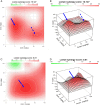Effect of Diclofenac and Andrographolide Combination on Carrageenan-Induced Paw Edema and Hyperalgesia in Rats
- PMID: 35663494
- PMCID: PMC9158437
- DOI: 10.1177/15593258221103846
Effect of Diclofenac and Andrographolide Combination on Carrageenan-Induced Paw Edema and Hyperalgesia in Rats
Abstract
Studies into drug combination at low doses are a promising approach to the management of pain and inflammation. The aim of this study was to evaluate the anti-edema and anti-hyperalgesic effects of a combination of diclofenac and andrographolide. Male Sprague-Dawley rats were first treated with diclofenac or andrographolide alone (3-100 mg/kg), as well as a combination of the 2 drugs. Carrageenan was then injected into the right hind paw of rats, and changes in paw volume and sensitivity to mechanical (von Frey) and thermal (Hargreaves test) stimuli measured. Results showed drug combination produced synergistic effects at reducing paw edema especially at lower doses, with a Loewe synergy score of 13.02 ± 8.75 in SynergyFinder and a combination index of .41 ± .18 after isobolographic analysis. Again synergy scores for decreasing response to 1.0 and 3.6 g force application of von Frey filaments after drug combination were 10.127 ± 5.68 and 8.554 ± 6.53, respectively, in SynergyFinder. Synergistic effects were also seen after drug combination in the Hargreaves test with a synergy score of 5.136 ± 16.38. In conclusion, combination of diclofenac with andrographolide showed better pharmacologic effects after carrageenan injection and was more synergistic at low-dose combinations.
Keywords: andrographolide; carrageenan; combination; diclofenac; hyperalgesia.
© The Author(s) 2022.
Conflict of interest statement
Declaration of conflicting interests: The author(s) declared no potential conflicts of interest with respect to the research, authorship, and/or publication of this article.
Figures





References
-
- Mills SEE, Nicolson KP, Smith BH. Chronic pain: A review of its epidemiology and associated factors in population-based studies. Br J Anaesth. Aug. 2019;123(2):e273-e283. doi:10.1016/j.bja.2019.03.023. - DOI
-
- McMahon SB, Koltzenburg M, Tracey I, Turk DC. Wall and Melzack’s Textbook of Pain. 6th ed. Philadelphia, USA: Elsevier Saunders; 2013:1153.
-
- Colloca L, Ludman T, Bouhassira D, et al. Neuropathic pain. Nature reviews Disease primers. 2017;3:17002-17002. doi:10.1038/nrdp.2017.2. - DOI
LinkOut - more resources
Full Text Sources

